Fast Dynamic Texture Detection And Segmentation
Dynamic textures (DTs) can be considered to be spatio-temporally varying visual patterns in image sequences, such as fire, waterfalls, crops in wind, shaking leaves, and many other instances of moving, structured or unstructured patterns. DT analysis has been found useful in a number of real-world applications, such as particle measurements, smoke detection in surveillance scenarios, and facial expression recognition.
DTs not only exhibit complex appearance but also commonly lack distinctive local features, for example due to transparency and challenging spatio-temporal variability. In this work, we propose a novel and efficient approach to explore the violation of the brightness constancy assumption, as an indication of presence of dynamic texture, using simple optical flow techniques. We assume that dynamic texture regions are those that have poor spatio-temporal optical flow coherence. Further, we propose another approach that uses robust global parametric motion estimators that effectively and efficiently detect motion outliers, and which we exploit as powerful cues to localize dynamic textures.
Compared to the state-of-art approaches in the literature, our methods are simpler and much faster. The key observation is that locations of DT can be detected as violations of the BCA either as a lack of spatio-temporal coherence of locally computed optical flow (method OFDT), or as motion outliers detected with some robust global parametric motion estimation (method MODT).
DT Detection Algorithm for Pixel (i, j) at Time t
 |
Comparison of OFDT and MODT
OFDT andMODT identifyDT locations by detecting “motion failures” either as spatiotemporally irregular optic flow or as outliers of global motion. OFDT is a local method, it thus offers more flexibility, but in its current form its performance still depends on the particular choice of the similarity measure, the estimation of the flow vectors (which can be wrongly noisy in non-DT regions), and on having to properly set the parameters in the specific optic flow method used. In comparison to OFDT,
- MODT is even simpler;
- MODT is as fast or faster than OFDT (depending on the particular way the optical flow is computed);
- MODT is generally very effective given that the parametric 2D motion is estimated on a frame-to-frame basis and no analysis is done on the temporal change of outliers, as it is done on the temporal change of the optical flow in OFDT;
- In MODT, no similarity measure S has to be defined and no critical parameter has to be set.
Example results - synthetic sequences (background moving affinely, random static DT)
| t=5 | t=25 | t=46 | |
| Fazekas et al. (Fazekas'09) | 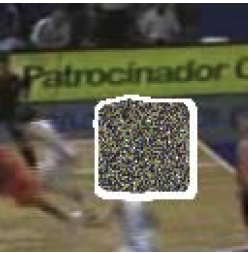 | 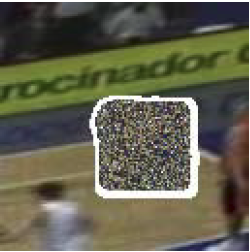 | 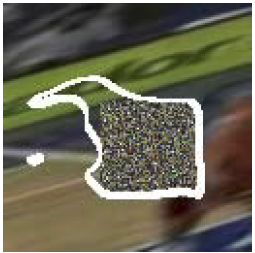 |
| OFDT |  |  |  |
| MODT | 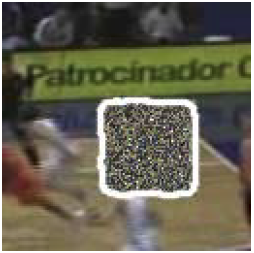 | 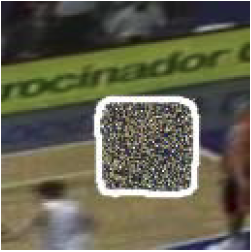 |  |
Example results - synthetic sequences (background with 5% random noise, random static DT)
| t=5 | t=25 | t=46 | |
| Fazekas et al. (Fazekas'09) | 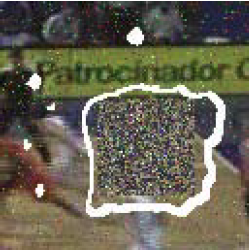 |  | 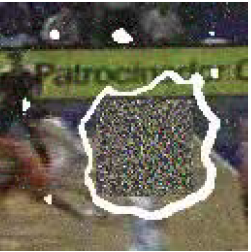 |
| OFDT |  | 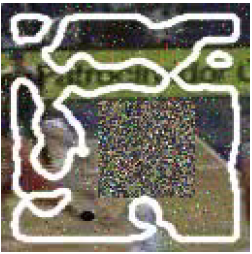 |  |
| MODT |  | 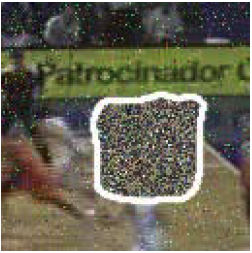 |  |
Example results - synthetic sequences (translating background, L-shaped random DT and static constant region)
| t=5 | t=25 | t=46 | |
| Fazekas et al. (Fazekas'09) | 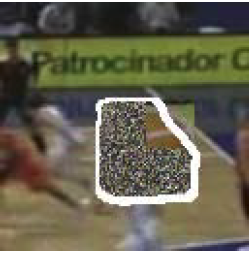 |  | 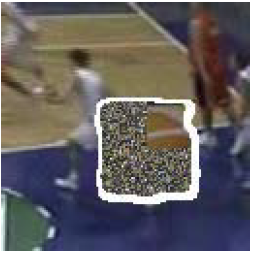 |
| OFDT | 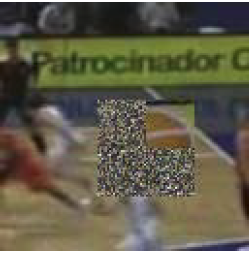 |  | 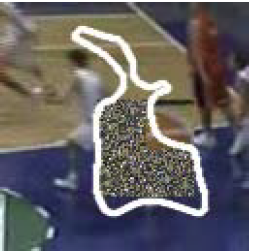 |
| MODT | 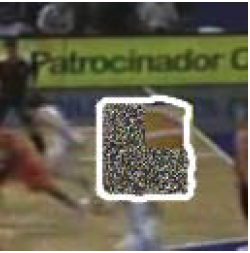 | 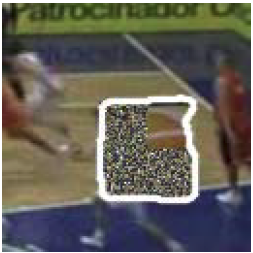 | 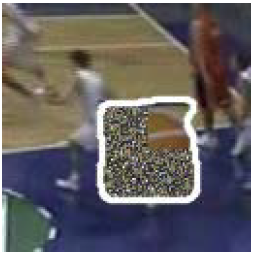 |
Example results - real sequences - waterfall
| t=200 | t=300 | t=500 | |
| Fazekas et al. (Fazekas'09) | 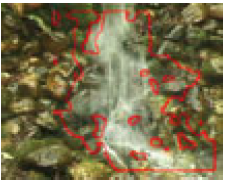 | 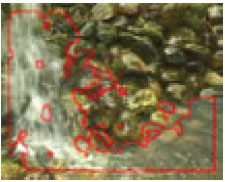 |  |
| OFDT |  | 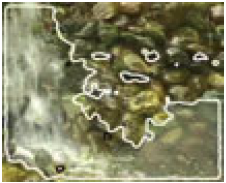 | 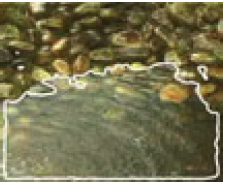 |
| MODT | 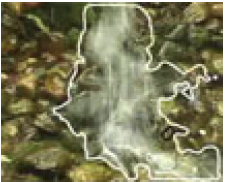 | 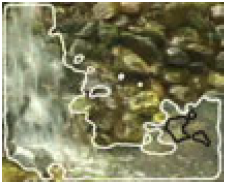 | 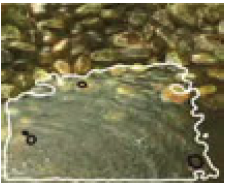 |
Example results - real sequences - smoke
| t=100 | t=400 | t=700 | |
| Fazekas et al. (Fazekas'09) | 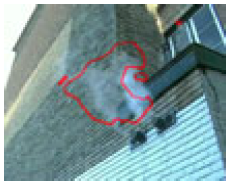 | 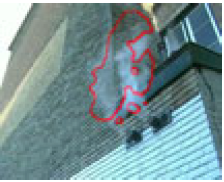 | 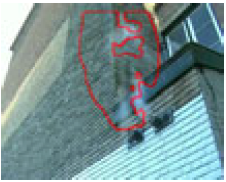 |
| OFDT | 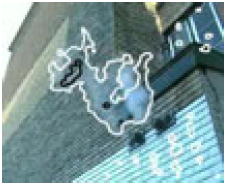 |  | 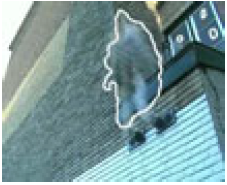 |
| MODT | 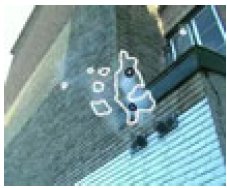 |  | 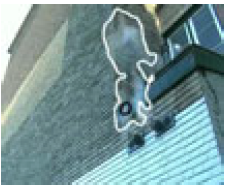 |
Example results - real sequences - duck
| t=50 | t=250 | t=540 | |
| Fazekas et al. (Fazekas'09) | 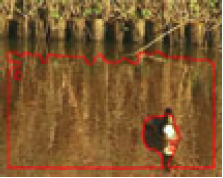 | 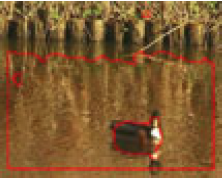 |  |
| OFDT |  |  |  |
| MODT |  | 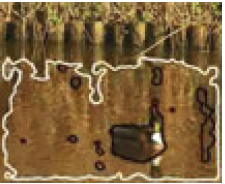 |  |
Example results - real sequences - computation time
| Sequence | No. of Frames | Fazekas et al. (Fazekas'09) | OFDT | MODT |
| Waterfall | 670 | > 5 hours | 9.1 min. | 4.3 min. |
| Smoke | 884 | > 7 hours | 8.8 min. | 5.3 min. |
| Duck | 540 | > 4 hours | 6.0 min. | 3.8 min. |
| Average time per frame (sec.) | 29 | 0.6 min. | 0.4 min. |
Funding
This project was funded by the Spanish research programme Consolider Ingenio-2010 under grant CSD2007-00018.
Publications
- Javier Traver, Majid Mirmehdi, Xianghua Xie, Raul Montoliu, Fast Dynamic Texture Detection, In Proceedings of the 11th European Conference on Computer Vision (ECCV2010), September 2010.
